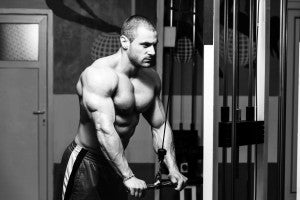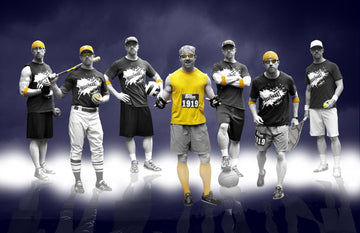

How Long Does it Take to Recuperate? 24 or 72 Hours?
Table of Contents
How Long Does it Take to Recuperate from a Workout?
by: Robbie Durand

If you ask any trainer how long you should rest between workouts, you will get answers anywhere from 24 hours to 72 hours. The late Mike Menzter often said that it took one full week of recuperation or longer to make gains in the gym. He often advocated taking a few weeks off of training, as he would often say that, “99% of all bodybuilders are over-trained!.” In a previous study, researchers were interested in a controlled study standardizing the diet and training with excessive training load and insufficient recovery time between bouts on muscle markers of anabolism and catabolism. They wanted to test the theory that overtraining would lead to increases in catabolic markers and decreased anabolic activity in male rats. Male rats were randomly assigned to either a trained or a sedentary group. The trained group was subjected to a 12-week resistance-training program with excessive training load and insufficient recovery between bouts that was designed to induce leg-muscle atrophy. Briefly, rats underwent consecutive training sessions (five days/week) that consisted of jumps (repetitions). The overtraining protocol consisted of a progressive number of sets (2–4) and repetitions (5–12) with a 30-second rest between each set and carrying an overload of 50% body weight (a loaded vest strapped on the animal’s chest). After the 12-week experiment, the muscle fibers were collected to analyze the markers of muscle catabolism and anabolism, such as MAFbx, MyoD, myogenin, and IGF-I protein expression. The overtraining program resulted in a significant reduction in muscle size in the legs (-17%,) compared with the control group. Reciprocally, there was a significant (~20%) increase in MAFbx protein expression (i.e., marker of muscle catabolism), while the markers of muscle anabolism such as MyoD (-27%), myogenin (-29%), and IGF-I (-43%) protein levels decreased significantly. The data indicates that muscle atrophy induced by excessive training load and insufficient recovery was associated with upregulation of the MAFbx catabolic protein and downregulation of the MyoD, myogenin, and IGF-I anabolic proteins. These findings suggest overtraining is a very real phenomenon for athletes who continuously increase their volume in the gym; to prevent overtraining, one should look into a blocked periodization-type program where volume is variable.

So based on the research in rodents, overtraining is a very real phenomenon with increases in catabolic hormones and decreases in anabolic hormones as well. There are very few human studies in human but a very exciting new study was recently reported on how long it takes to recuperate from both single and multi-joint exercise protocols. Its been often speculated that one can recuperate from training faster with smaller body parts such as arms or calves faster that larger body parts such as legs or back. The study examined muscle recovery patterns between single-joint versus multi-joint, and upper-body versus lower-body exercises and the utility of perceptual measures (ratings of perceived exertion (RPE) and perceived recovery scale PRS to assess recovery status. All participants completed 10 different exercises. Resistance exercises included: flat barbell bench press, seated dumbbell military press, barbell dead lift, machine leg press, knee extension, machine triceps extension, dumbbell side raises, machine chest fly, and seated machine hip abduction/adduction. A 10-rep max (10-RM) was determined for 6 single-joint and 4 multi-joint exercises (5 upper body and 5 lower body) for male recreational weightlifters. Participants completed a baseline protocol including 8 repetitions at 85% of 10-RM followed by a set to failure with 100% of 10-RM. In a counter-balanced crossover design, participants returned at 24 or 48 h to repeat the protocol. PRS and RPE were assessed following the first and second sets of each exercise respectively. At the end of the study, the performance decline was most pronounced for the multi-joint movements bench press, military press, deadlift, and leg press) and least pronounced if not non-existent for the single joint exercises. So the single joint exercises such as triceps extensions had faster recuperation than the larger multi-joint exercises such as the leg press and deadlift. A shocking finding was that there was also a tendency for the lower body exercises to recover faster than the upper body that stands in contrast to the advice that lower body parts needs more recuperation time that would require longer recovery periods. Eighty percent of participants completed within 1 repetition of baseline for all exercises at 48 h except bench press (70%) and deadlift (60%); suggesting 72 h of recovery should be implemented for multi-joint barbell lifts targeting the same muscle groups in slower recovering lifters. There was a lot of subject variability in the subjects, but the scientist suggested that 72 h of recovery should be implemented for multi-joint barbell lifts targeting the same muscle groups. So just to be on the safe side, it seems that 72 hours is the optimal recuperation times for training multi-joint exercises.
Korak, John A.; Green, James M.; and O’Neal, Eric K. () “Resistance Training Recovery: Considerations for Single vs. Multi-joint Movements and Upper vs. Lower Body Muscles,” International Journal of Exercise Science: Vol. 8: Iss. 1, Article 10.
Alves Souza RW, Aguiar AF, Vechetti-Júnior IJ, Piedade WP, Rocha Campos GE, Dal-Pai-Silva M. Resistance training with excessive training load and insufficient recovery alters skeletal muscle mass-related protein expression. J Strength Cond Res. 2014 Aug;28(8):2338-45.
MUSCLE MEDIA MAGAZINE FOR MEN
The premier source of training, nutrition, supplements, fat loss and health for men.

















